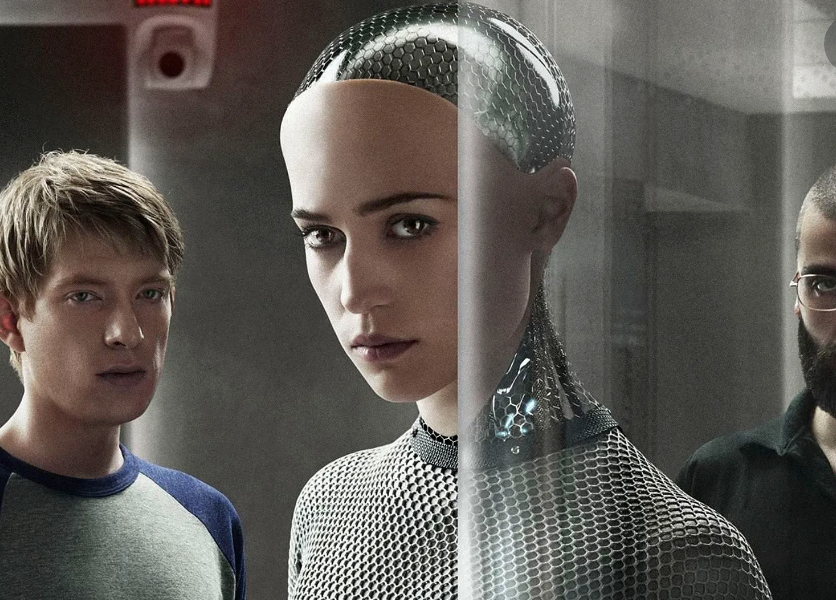
Choreo-roboticist. A New Way To Train Robotics
Wired Story: Robot Choreography Expresses Human Qualities
While reading the article we found at wired.com, we came upon a word we had not seen before: choreo-roboticist. Sidney Skybetter is the author of the piece that explains what a choreo-roboticist is and what they do exactly.
CONSIDER THIS SCENE from the 2014 film, Ex Machina: A young nerd, Caleb, is in a dim room with a scantily clad femmebot, Kyoko. Nathan, a brilliant roboticist, drunkenly stumbles in and brusquely tells Caleb to dance with the Kyoko-bot. To kick things off, Nathan presses a wall-mounted panel and the room lights shift suddenly to an ominous red, while Oliver Cheatham’s disco classic “Get Down Saturday Night” starts to play. Kyoko—who seems to have done this before—wordlessly begins to dance, and Nathan joins his robotic creation in an intricately choreographed bit of pelvic thrusting. The scene suggests that Nathan imbued his robot creation with disco functionality, but how did he choreograph the dance on Kyoko, and why?
Ex Machina may not answer these questions, but the scene does gesture to an emergent area of robotics research: choreography.
Definitionally, choreography is the making of decisions about how bodies move through space and time. In the dancerly sense, to choreograph is to articulate movement patterns for a given context, generally optimizing for expressivity instead of utility. To be attuned to the choreographics of the world is to be mindful of how people move and interact within complex, technology-laden environments. Choreo-roboticists (that is, roboticists who work choreographically) believe that incorporating dancerly gestures into machinic behaviors will make robots seem less like industrial contrivances, and instead more alive, more empathetic, and more attentive. Such an interdisciplinary intervention could make robots easier to be around and work with—no small feat given their proliferation in consumer, medical, and military contexts.
And we all have seen the way that NFL, MLB, And NBA real-life players, have been digitally recreated to play on the multitude of video games the world enjoys. To make these players seem more real year after year has become a must-do in order for these companies to stay in business. More work for choreo-roboticists perhaps? But the article goes deeper. Much deeper.
Do Robots Favor Races?
As sociologists Simone Browne, Ruha Benjamin, and others have demonstrated, there is a long-standing history of emerging technologies that cast human bodies as mere objects of surveillance and speculation. The result has been the perpetuation of racist, pseudoscientific practices like phrenology, mood reading software, and AIs that purport to know if you’re gay by how your face looks. The body is a problem for computer scientists, and the overwhelming response by the field has been technical “solutions” that seek to read bodies without meaningful feedback from their owners. That is, an insistence that bodies be seen, but not heard.
Despite the historical divide, it is perhaps not too great a stretch to consider roboticists as choreographers of a specialized sort and to think that the integration of choreography and robotics could benefit both fields. Usually, the movement of robots isn’t studied for meaning and intentionality the way it is for dancers, but roboticists and choreographers are preoccupied with the same foundational concerns: articulation, extension, force, shape, effort, exertion, and power.
“Roboticists and choreographers aim to do the same thing: to understand and convey subtle choices in movement within a given context,” writes Amy Laviers, a certified movement analyst and founder of the Robotics, Automation and Dance (RAD) Lab in a recent National Science Foundation-funded paper.
When roboticists work choreographically to determine robot behaviors, they’re making decisions about how human and inhuman bodies move expressively in the intimate context of one another. This is distinct from the utilitarian parameters that tend to govern most robotics research, where optimization reigns supreme (does the robot do its job?), and what a device’s movement signifies or makes someone feel is of no apparent consequence.
Thia is an extremely detailed and well-researched article with just too much information to share in a curated piece. You must read the article at the link below to really grasp the impact that robotics and choreography have on so many industries. Industries that have NOTHING to do with dancing, but everything to do with movement in the workplace being shared by humans and robots.
read more at wired.com







Leave A Comment